Art World
We Decoded All the Ingenious Art-Historical References in the Horror Movie ‘Midsommar,’ From Hilma af Klint to Judy Chicago
Director Ari Aster told us how he packed the film with references from art history.
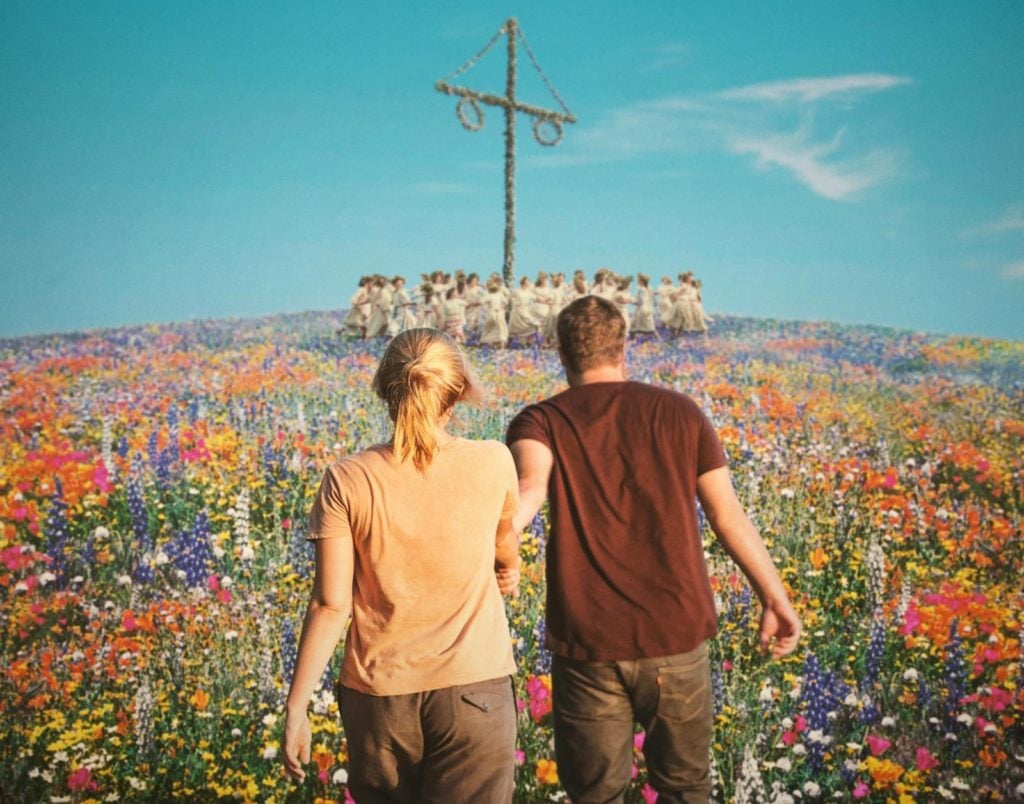
Director Ari Aster told us how he packed the film with references from art history.

Caroline Goldstein

Art plays a key supporting role in the the recent hit horror-thriller Midsommar. Once you get to the end of the film, it becomes clear that director Ari Aster has laid artistic breadcrumbs in the background that, upon closer consideration, reveal how the dark climax was being set up from the start.
Aster, who released a new director’s cut of Midsommar last week, explained to artnet News that the art “saturates the film with prophetic details.”
The story follows a grief-stricken young woman named Dani (played by Florence Pugh), who, after enduring a grisly family tragedy, joins her callous boyfriend Christian and his ragtag group of grad-school buddies on a summertime jaunt to a Swedish village. They arrive just in time to take part in the traditional midsommar celebration, which only comes once every 90 years.
Against the sunlit backdrop of the village, the creepy blond inhabitants wear permanent smiles and ornate floral crowns. Toward the end, Dani regains her sense of agency while seated for dinner at a long triangular table that, upon reflection, looks a lot like Judy Chicago’s feminist classic The Dinner Party—a sly bit of foreshadowing if you know the ending.
Then there’s the wreath that Dani wears while seated in this same scene, which reminds us of something out of Mika Rottenberg’s occasionally phantasmagoric video art, especially when the flower buds open their pursed lips and start to breathe.
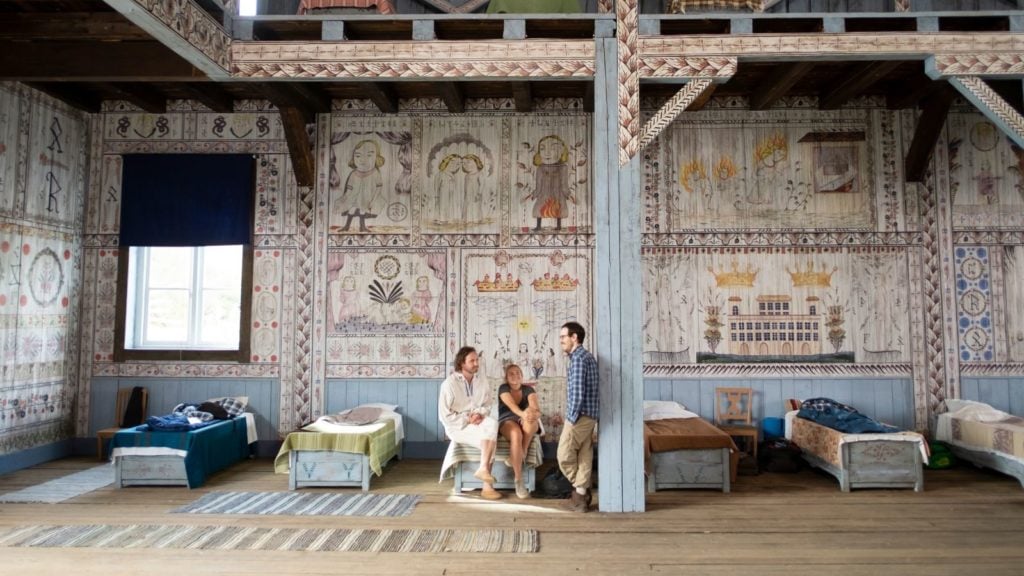
Director Ari Aster on the set of Midsommar. Image courtesy of A24.
So, what art did the director actually draw on to realize his vision? Particularly influential, Aster said, were artists associated with theosophy and occultism, such as Hilma af Klint, František Kupka, and Rudolf Steiner—figures whose work often features repeated symbols and colors that coincide with a certain spiritual lexicon.
As it turns out thought, it was just a happy accident that the Guggenheim was in the midst of its blockbuster “Hilma af Klint: Paintings for the Future” show when Aster returned to New York from filming in Sweden. The Swedish artist’s The Ten Largest series of paintings, which reflect different stages of life cycles, was “a connection made after the script was written,” Aster said.
Other artists who inspired the film include native Swedes such as the illustrator John Bauer, who is best known for dreamscapes that blur fantasy and mythology, often with a dark undercurrent; the watercolorist Carl Larsson; French painter Pierre Puvis de Chavannes; and the macabre photographer Joel Peter Witkin, who is known to have used real corpses to inspire his nightmarish tableaux.
Aster also took cues from theater. Antonin Artaud’s Theatre of Cruelty, he says, was “a particularly important reference” for Midsommar.
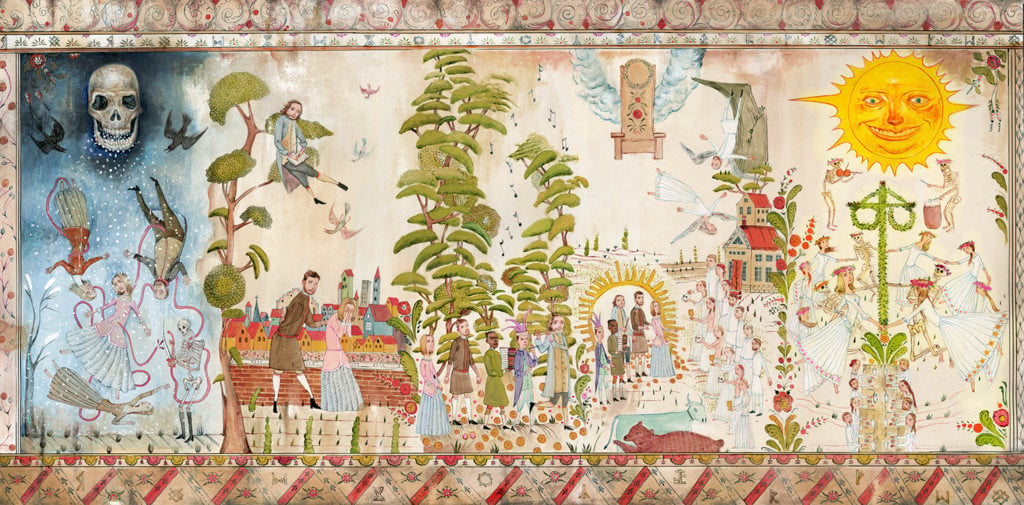
Mu Pan’s mural for Midsommar (2019). Courtesy of the artist.
One of the very first images viewers see when the film begins is an intricate mural inspired by the New York-based artist Mu Pan, whom Aster has described as a spiritual descendant of Hieronymus Bosch. When Aster’s production crew reached out to the artist about making a work for the film, “I didn’t hesitate to say, ‘yes,'” Mu Pan told artnet News. “I am a big fan of Hereditary” (Aster’s previous film).
“The main idea was to create a painting in my style that captured Ari’s ideas, and all of the symbols of the film,” the artist explained. “I do have a lot of influence from Bosch, Bruegel, Indian miniatures, Tibetan tanka, illuminated manuscripts, and Eastern scroll paintings.”
Below, we’ve rounded up some of the most fascinating artistic breadcrumbs we spotted in the movie, with the film stills above them for comparison—because while it might be closer to latesommar than midsommar, it’s always a good time for prestige art-inflected horror!
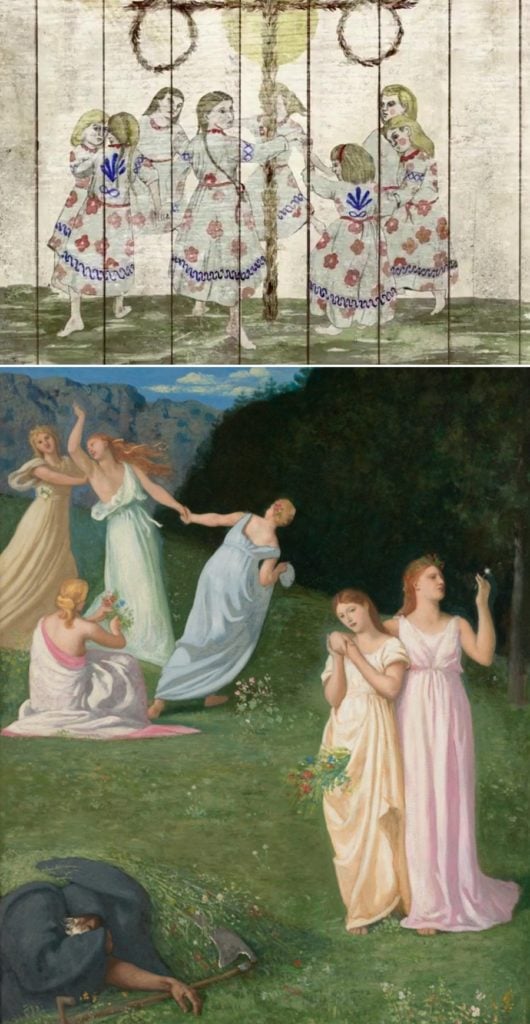
Top, a still from Midsommar; Pierre Puvis de Chavannes, Death and the Maidens (1872), courtesy of The Clark Art Museum.
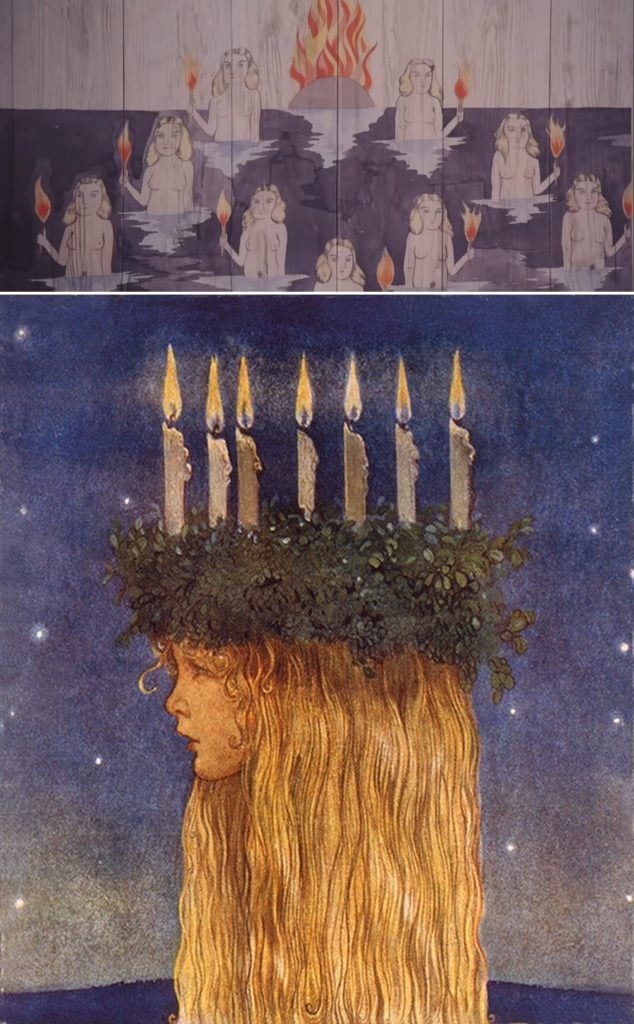
Top, a still from Midsommar; John Bauer’s Lucia (1913).

Top, a still from Midsommar; John Bauer’s illustration, courtesy of Wikimedia.
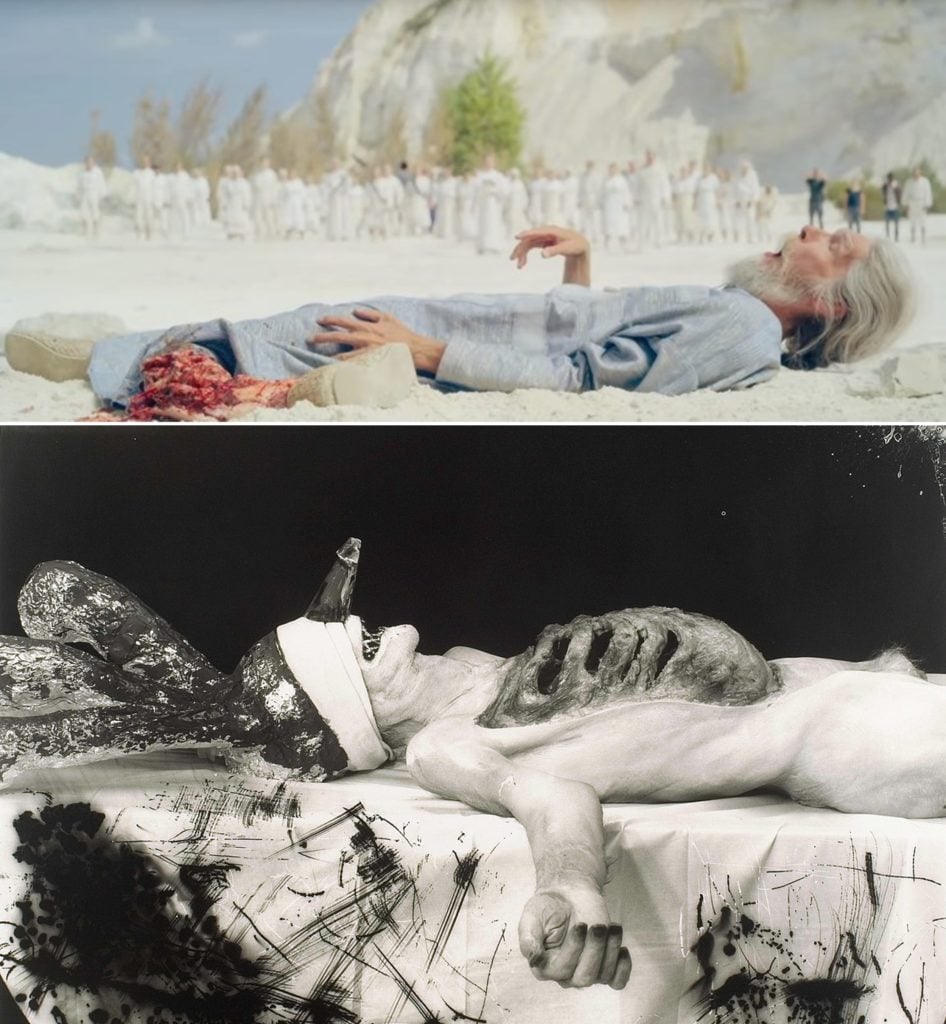
Top, astill from Midsommar, courtesy of A24 (2019); Joel-Peter Witkin’s Myself as a Dead Clown (2007). ©Joel-Peter Witkin.
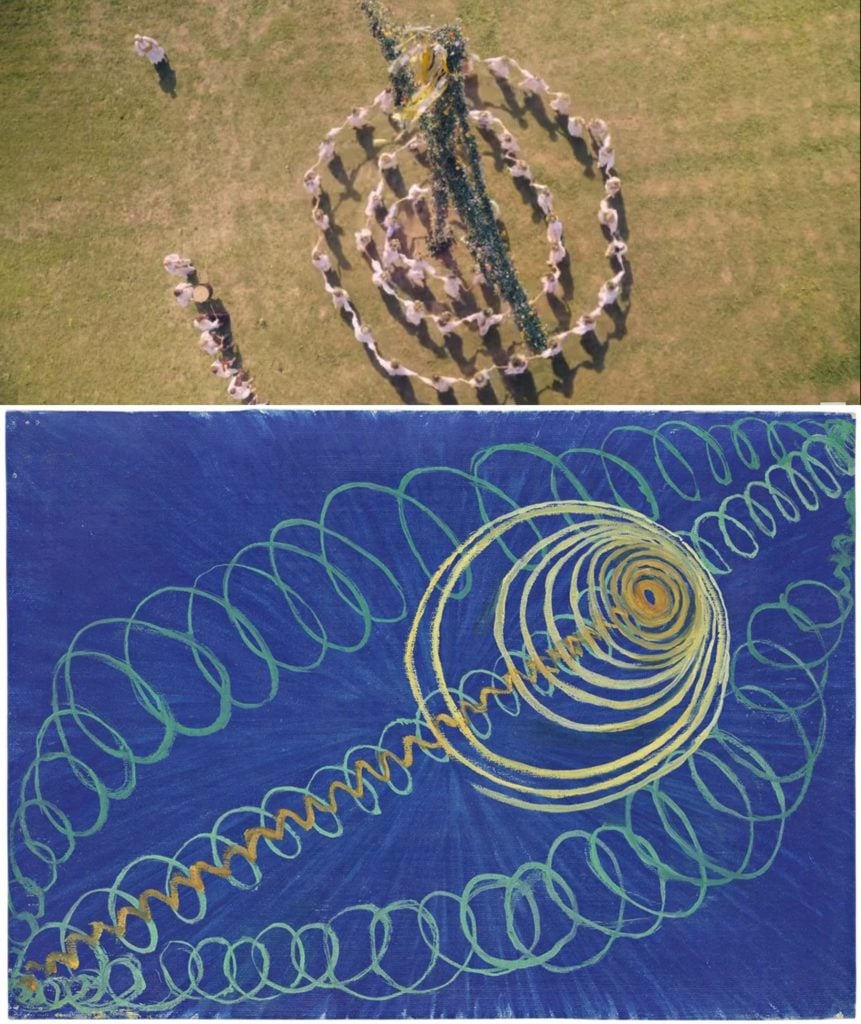
Top, an aerial shot from Midsommar; Hilma af Klint’s Group 1, Primordial Chaos No.16 (1906-077). Courtesy of the Guggenheim.